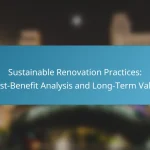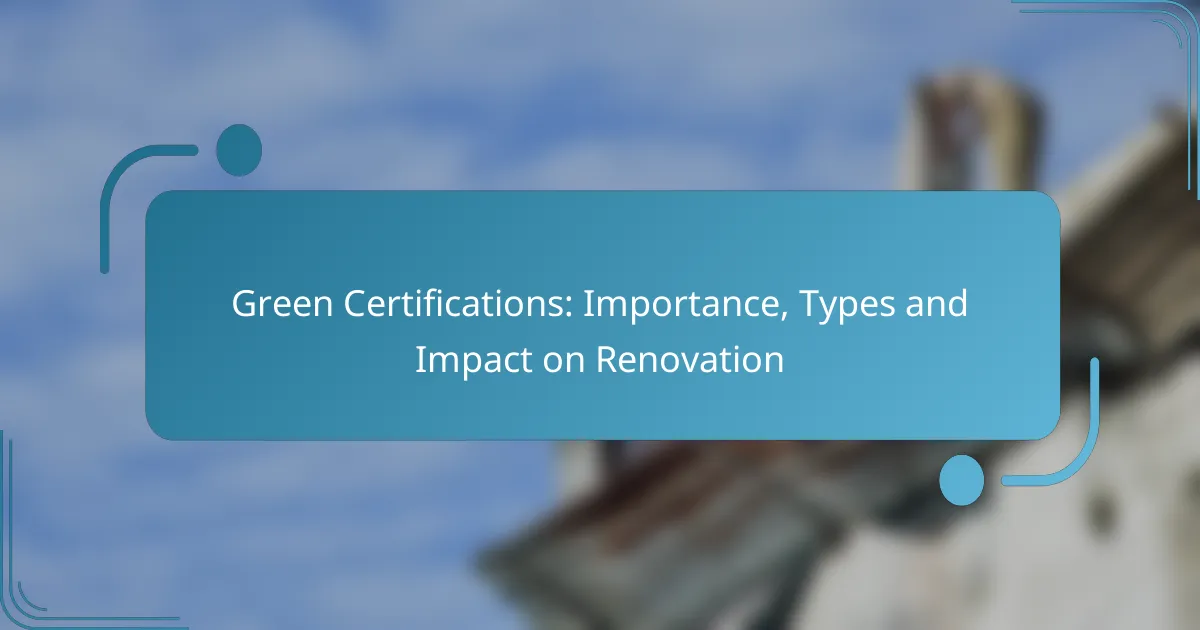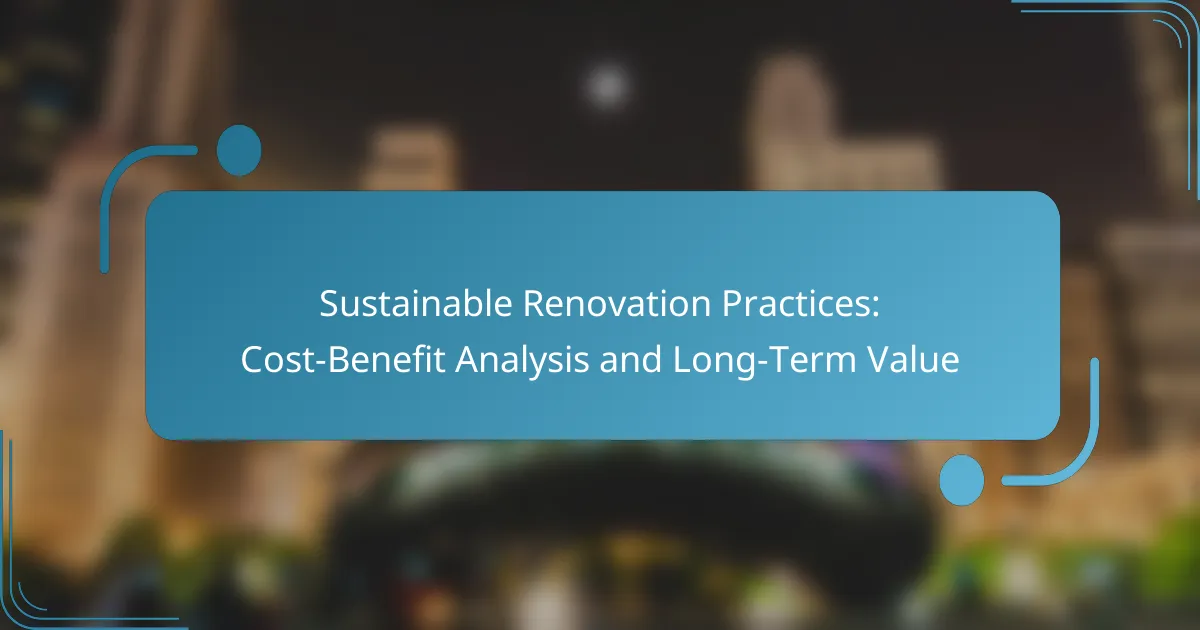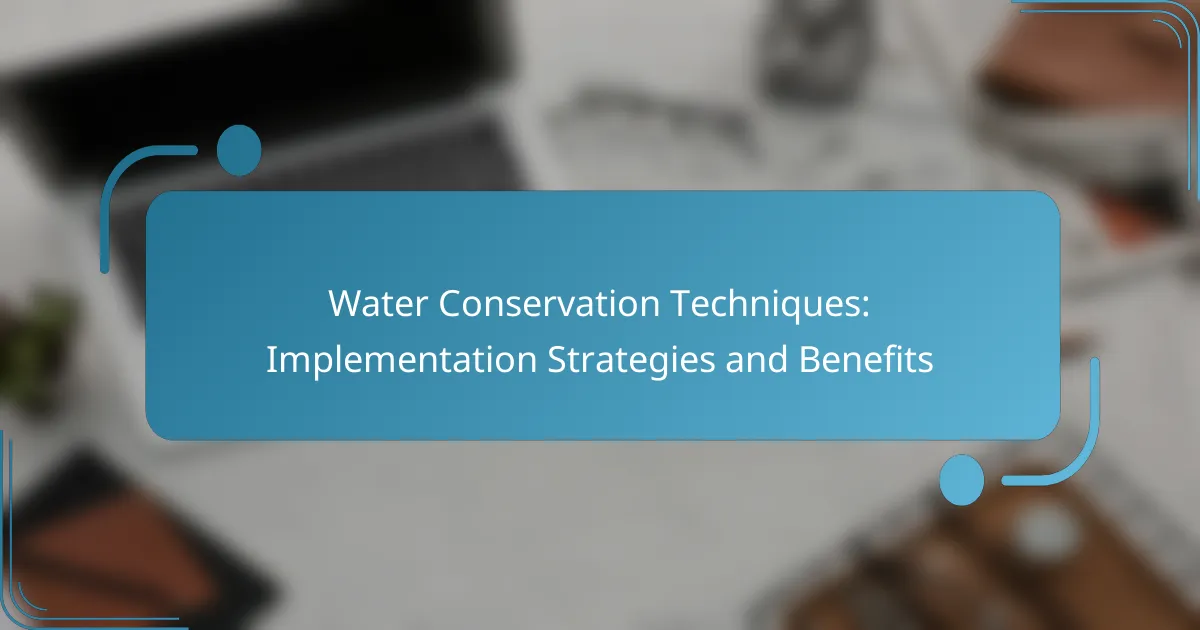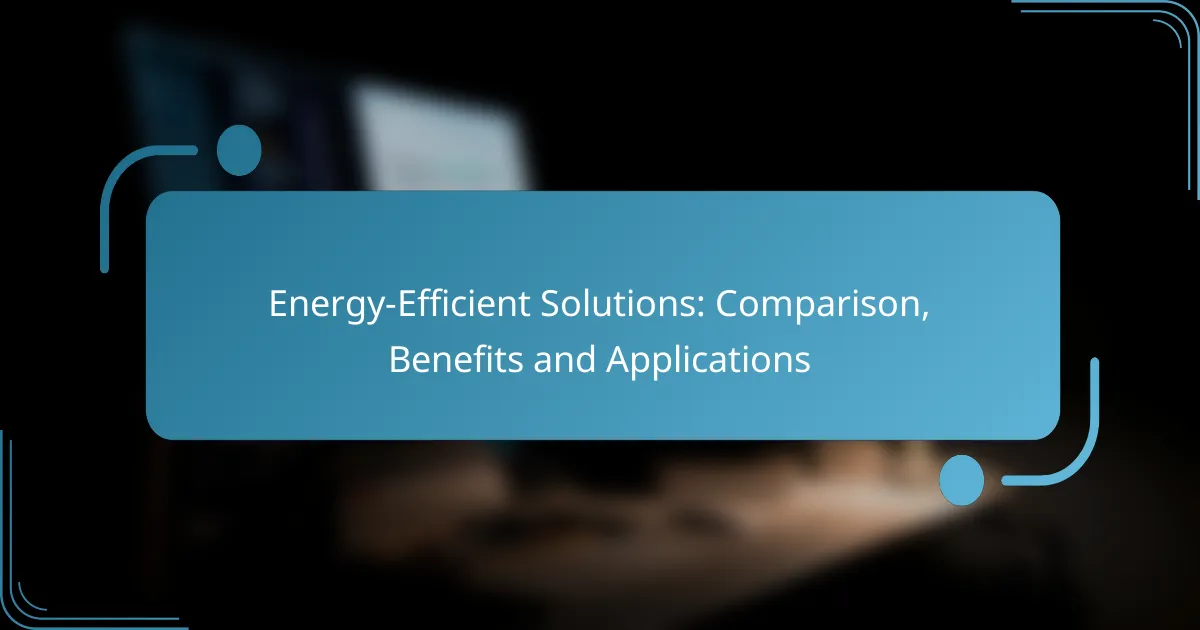Green certifications play a vital role in renovation by ensuring adherence to environmental standards and fostering sustainable practices. By focusing on sustainability, energy efficiency, and environmental impact, these certifications not only improve the quality of renovation projects but also enhance their appeal to owners and potential buyers.

Why are green certifications important for renovation?
Green certifications are crucial for renovation as they signify compliance with environmental standards and promote sustainable practices. These certifications can enhance the overall quality of a renovation project, making it more appealing to both owners and potential buyers.
Enhance property value
Obtaining green certifications can significantly enhance property value by demonstrating a commitment to sustainability. Properties with certifications often command higher prices, as buyers are increasingly willing to pay a premium for energy-efficient and environmentally friendly homes.
For example, homes certified by recognized programs like LEED or BREEAM can see value increases ranging from 5% to 20% compared to similar non-certified properties. This added value can be a compelling reason for homeowners to invest in green renovations.
Improve energy efficiency
Green certifications often require adherence to strict energy efficiency standards, leading to reduced utility costs. Renovations that focus on energy-efficient materials and systems can lower energy consumption by a significant margin, often resulting in savings of 20% or more on monthly bills.
Incorporating energy-efficient appliances, insulation, and windows not only meets certification criteria but also contributes to long-term savings. Homeowners should consider conducting an energy audit to identify areas for improvement before starting renovations.
Attract eco-conscious buyers
Eco-conscious buyers are increasingly seeking homes that reflect their values, making green certifications a powerful marketing tool. Properties with these certifications appeal to buyers who prioritize sustainability and environmental responsibility, often leading to quicker sales.
To attract this demographic, homeowners should highlight any green certifications in listings and marketing materials. Additionally, showcasing energy-efficient features and sustainable materials can further entice potential buyers who are looking for a home that aligns with their eco-friendly lifestyle.
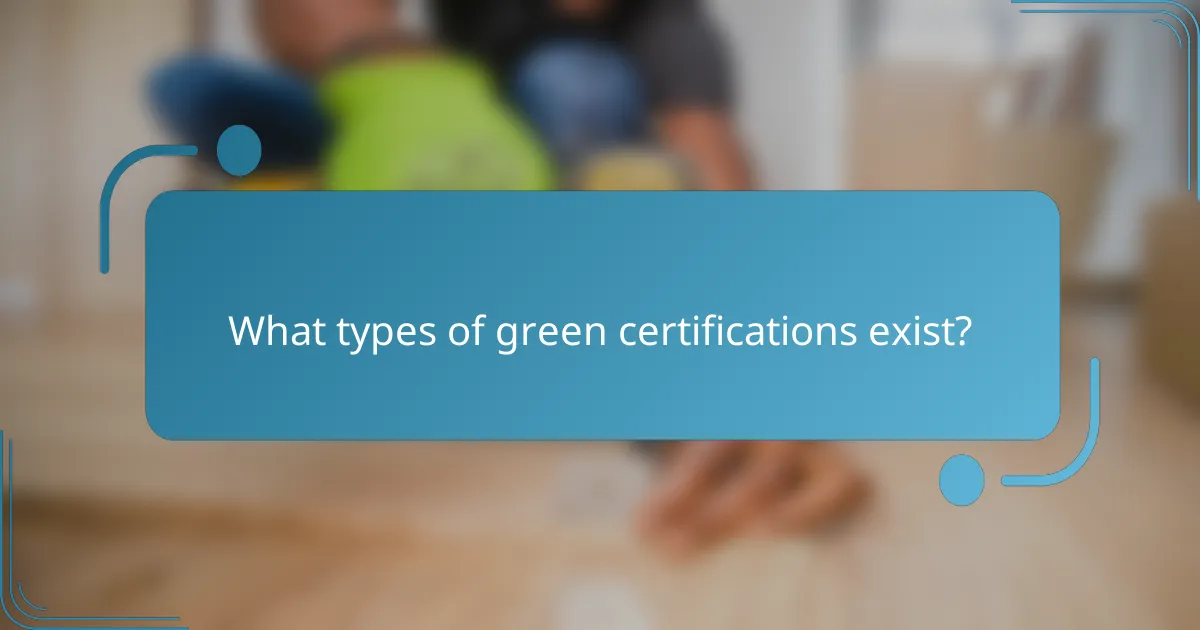
What types of green certifications exist?
Green certifications vary widely, focusing on sustainability, energy efficiency, and environmental impact. They help consumers and businesses identify eco-friendly practices and products, ultimately guiding renovation decisions.
LEED certification
LEED (Leadership in Energy and Environmental Design) is a globally recognized green building certification system. It evaluates buildings based on various criteria, including energy efficiency, water usage, and materials selection.
To achieve LEED certification, projects must earn points across several categories, with different levels of certification available: Certified, Silver, Gold, and Platinum. This tiered approach allows for flexibility in meeting sustainability goals.
When considering LEED, ensure your renovation aligns with its standards, as the certification process can be rigorous and may involve additional costs. However, the long-term savings on energy bills can offset these initial investments.
Energy Star certification
Energy Star certification focuses on energy efficiency in buildings and products, helping consumers identify those that meet strict energy performance standards. It is particularly relevant for appliances, electronics, and homes.
To qualify for Energy Star, a product or building must perform in the top 25% of its category for energy efficiency. This certification can lead to significant savings on utility bills, making it a practical choice for renovations.
Consider incorporating Energy Star-rated appliances and systems in your renovation to enhance energy efficiency and potentially qualify for rebates or tax incentives, depending on local regulations.
BREEAM certification
BREEAM (Building Research Establishment Environmental Assessment Method) is a leading sustainability assessment method for master planning projects, infrastructure, and buildings. It emphasizes a holistic approach to sustainability, covering aspects like energy, water, and materials.
Projects are assessed against a set of criteria, and points are awarded based on performance. BREEAM offers several ratings, including Pass, Good, Very Good, Excellent, and Outstanding, allowing for a range of sustainability achievements.
When pursuing BREEAM certification, be prepared for a comprehensive evaluation process that may require collaboration with sustainability consultants. The benefits include improved marketability and potential increases in property value, making it a worthwhile consideration for renovations.
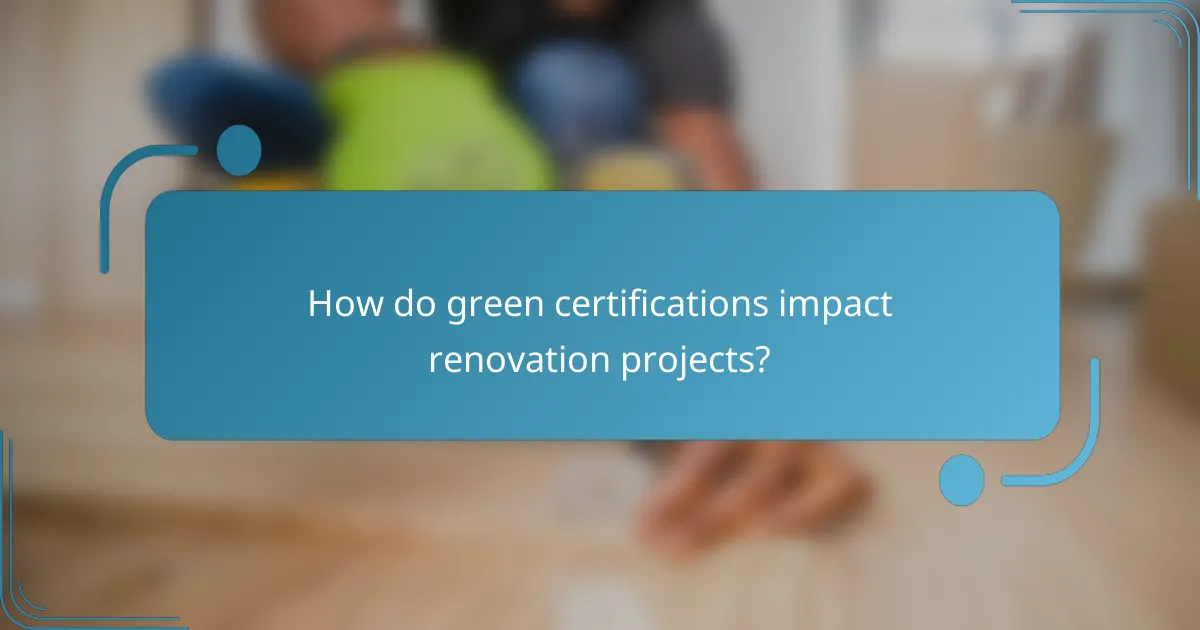
How do green certifications impact renovation projects?
Green certifications significantly influence renovation projects by promoting sustainability and enhancing property value. These certifications often lead to reduced operational costs and open up additional funding opportunities, making them a strategic choice for property owners and developers.
Reduce operational costs
Implementing green certifications can lead to substantial reductions in operational costs through improved energy efficiency and resource management. For example, buildings that meet green standards often consume less energy and water, resulting in lower utility bills.
Investing in energy-efficient appliances and sustainable materials during renovations can yield savings of 20-30% on energy costs over time. Additionally, many green certifications encourage the use of renewable energy sources, which can further decrease reliance on traditional energy providers.
Increase project funding opportunities
Green certifications can enhance access to various funding opportunities, including grants, loans, and tax incentives specifically aimed at sustainable projects. Many governments and organizations offer financial support for renovations that meet environmental standards, which can significantly offset initial costs.
For instance, in the United States, the Energy Efficiency and Conservation Block Grant Program provides funding for projects that improve energy efficiency. Property owners can also benefit from lower interest rates on loans for certified green renovations, making financing more accessible.

What are the prerequisites for obtaining green certifications?
To obtain green certifications, projects must meet specific criteria that demonstrate environmental responsibility. These prerequisites typically include compliance with local building codes and the use of sustainable materials.
Compliance with local building codes
Ensuring compliance with local building codes is essential for obtaining green certifications. These codes set the minimum standards for safety, health, and sustainability in construction. Familiarize yourself with the regulations in your area, as they can vary significantly between regions.
In many cases, green certifications require adherence to additional standards beyond basic building codes. For example, projects may need to meet energy efficiency benchmarks or water conservation measures. Engaging with local authorities early in the renovation process can help clarify these requirements.
Use of sustainable materials
The use of sustainable materials is a critical factor in achieving green certifications. Sustainable materials are those that have a reduced environmental impact, such as recycled, reclaimed, or rapidly renewable resources. Prioritize materials that are locally sourced to minimize transportation emissions.
When selecting materials, consider their lifecycle impact, including production, usage, and disposal. For instance, opting for low-VOC (volatile organic compounds) paints and finishes can improve indoor air quality while contributing to sustainability goals. A checklist of sustainable materials can help streamline your selection process and ensure compliance with certification standards.
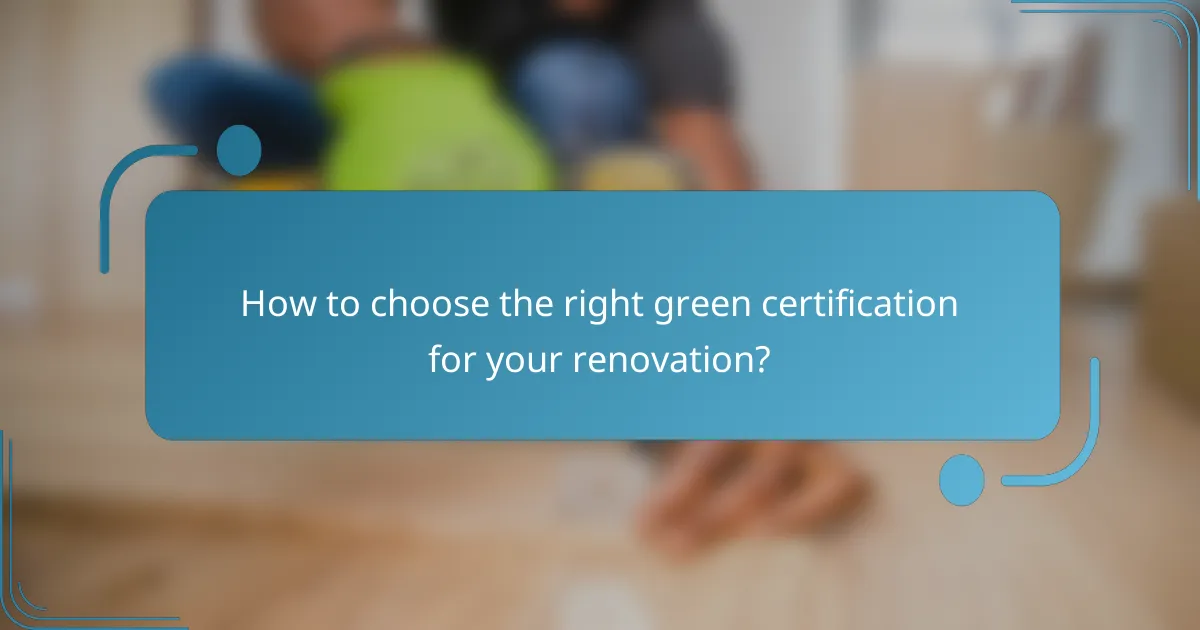
How to choose the right green certification for your renovation?
Selecting the appropriate green certification for your renovation involves understanding your project’s specific goals and constraints. Different certifications cater to various aspects of sustainability, so it’s essential to align your choice with your renovation objectives and budget.
Assess project goals
Begin by clearly defining what you want to achieve with your renovation. Are you aiming for energy efficiency, sustainable materials, or indoor air quality improvement? Identifying your primary goals will help narrow down the certification options that best fit your needs.
For instance, if energy efficiency is a priority, certifications like LEED or Energy Star may be suitable. Conversely, if you are focused on sustainable materials, consider certifications such as FSC (Forest Stewardship Council) or Cradle to Cradle.
Consider budget constraints
Your budget plays a crucial role in determining which green certification is feasible for your renovation. Each certification has associated costs, including application fees, documentation, and potential upgrades to meet standards.
Evaluate whether the potential benefits of certification, such as energy savings or increased property value, justify the initial investment. For example, while LEED certification can be costly, it may lead to significant long-term savings on energy bills.

What are the emerging trends in green certifications?
Emerging trends in green certifications focus on integrating advanced technologies and prioritizing sustainability goals, such as carbon neutrality. These trends reflect a growing awareness of environmental impacts and aim to enhance the efficiency and effectiveness of renovation projects.
Integration of smart technology
Smart technology is increasingly being incorporated into green certifications to optimize energy use and improve building performance. This includes the use of smart meters, automated lighting systems, and energy management software that help monitor and reduce energy consumption.
For example, buildings equipped with smart thermostats can adjust heating and cooling based on occupancy patterns, leading to significant energy savings. When considering renovations, integrating smart technology can enhance a property’s green credentials and appeal to environmentally conscious buyers.
Focus on carbon neutrality
A key trend in green certifications is the emphasis on achieving carbon neutrality in building renovations. This involves reducing greenhouse gas emissions to net zero through energy efficiency measures and the use of renewable energy sources.
To achieve carbon neutrality, property owners should consider implementing energy-efficient appliances, utilizing solar panels, and investing in high-performance insulation. Understanding local regulations and incentives related to carbon reduction can also provide financial benefits and support sustainable renovation efforts.



